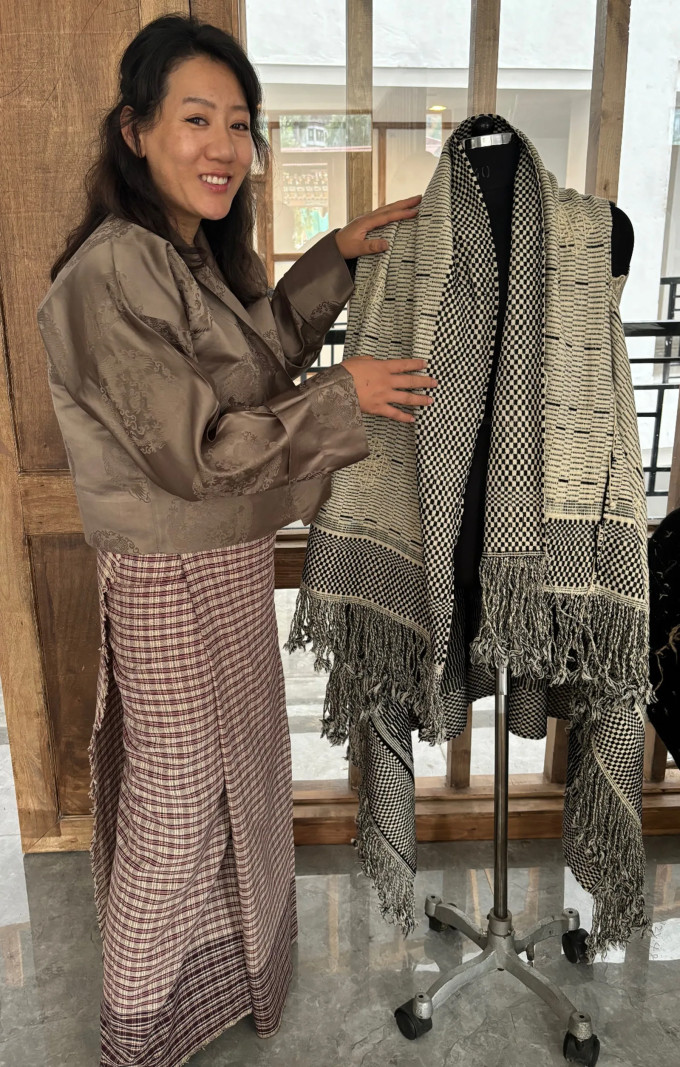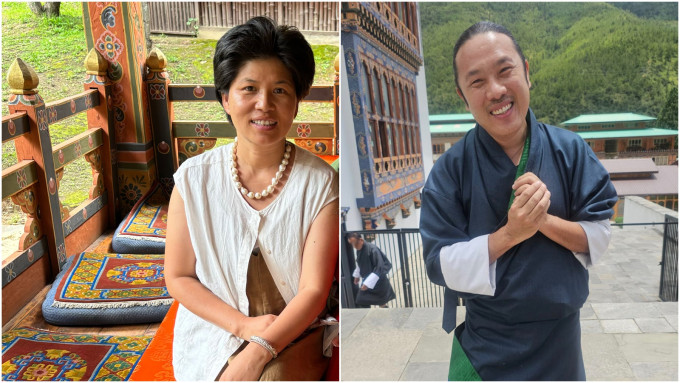How Bhutanese designers navigate fashion’s evolution while balancing tradition with modernity
During the first week of August, I had the privilege of attending ‘The Bhutan Echoes’ Literature Festival, an event I was invited to by the Queen Mother of Bhutan. I got the chance to explore Bhutan’s rich cultural heritage, its evolving fashion industry, and how these two aspects affected each other. I had detailed conversations with celebrated designers and budding talents, and gained insights into how Bhutanese fashion is navigating the balance between tradition and modernity.
An evolving fashion landscape
As I spoke with Lhari, our local tour guide and a budding fashion designer who studied at the National Institute of Fashion Technology (NIFT) in India, he said, “Touching down in Bhutan, one of the first things travelers notice is the prevalence of the traditional national dress. On any given day, the streets are alive with people proudly wearing the distinctive attire in a rainbow of colours and patterns.”

The Gho for men, a wraparound robe usually worn belted and cut at the knee, and Kira for women, a long-sleeved colourful jacket and sari-like skirt, are more than just clothing; they are symbols of Bhutanese identity and pride.
However, Lhari is of the opinion that Bhutan is at a pivotal moment of change, with modern influences creeping in, but said that despite these influences, the Bhutanese people are determined to keep their traditional dress relevant. “The local folks are certain that they don’t want the national dress to become a relic of Bhutanese past,” he said.
Balancing tradition with innovation
In Bhutan, there are many designers who blend homegrown fabrics and traditional weaving techniques with modern styles. The use of ‘Yathra,’ a woven textile made from yak and sheep wool, is a good example. This has been an integral part of Bhutanese heritage since the 17th century. Trima, another unique technique, involves a sophisticated weaving process that creates raised motifs on fabric, often mistaken for embroidery.
Bhutanese designers use these traditional materials and employ these age-old techniques not only to preserve their culture, but also to offer something unique in the global fashion market. “It’s very important to use homegrown materials because it differentiates us and makes our designs unique,” Lhari said. This commitment to tradition is married with a desire to keep fashion accessible to the local population, even as Bhutanese designers gain international recognition.
 Sony CTenzin is a self-taught designer with over 18 years of experience in fashion and textile designing.
Sony CTenzin is a self-taught designer with over 18 years of experience in fashion and textile designing.
Challenges in a modern world
The fashion industry in Bhutan faces many challenges. The rise of fast fashion globally has put pressure on local artisans who rely on slow, sustainable practices. “Our textile industry is sustainable and slow,” Lhari said. “It takes about three to six months or sometimes a year to weave a Kishuthara or patterned Kira. But globally, there is rapid production of clothing, catering to consumer demand. It is very difficult for the locals to keep up with fast fashion,” he said.
Bhutanese designers are also concerned about maintaining the relevance of the national dress among younger generations. The laws enforcing the wearing of traditional dress have softened, but it remains mandatory in government offices, schools, and monasteries. Today, the national dress is seen less as a strict uniform and more as a canvas for personal expression, with no limits on the colours and patterns that can be used.
Celebrated designers leading the way
I also had the pleasure of meeting two of Bhutan’s most celebrated designers, Chandrika Tamang and Sony CTenzin, who lead the way in the country.
Tamang shared her journey from being a banker to a fashion designer. “I always spent my free time ripping clothes and stitching them back. It took me about six years to realise that designing was my calling.” She won the prestigious National Woman Entrepreneur Award in 2017 from the Department of Cottage and Small Industry (DSCI) under the Ministry of Economic Affairs. “Till now I am the only the woman entrepreneur from the fashion industry who has won that award,” she said.
Tamang’s brand––CDK Gyencha––is known for its commitment to sustainable fashion, responsibly and consciously selecting and processing raw material, harming no animal, people or planet. “We use natural or Azo-free dyes, natural fibres, and avoid leather or fur,” she said. Her vision is to make it one of the world’s most environmentally friendly brands, leaving zero carbon footprint while promoting and preserving traditional weaving methods.
CTenzin, a self-taught designer with over 18 years of experience in fashion and textile designing, founded the Fashion Institute of Technology (FIT) of Bhutan to address the shortage of skilled tailors and tackle youth unemployment, and serves as its CEO.
“Since March 2018, my team and I have developed the curriculum for fashion design under the National Certificate and implemented tailored courses for FIT’s clients, in collaboration with the Government Ministry and MoLHR (Ministry Of Labour & Human Resources,” CTenzin said. Her work, supported by the EU-Bhutan Trade Support Project, has led to the formation of the Bhutan Textile Association, where she serves as the chairperson. With her team, CTenzin regularly designs capsule collections for high-end markets in Europe, the USA, and Japan.
 Tamang (L) shared her journey from being a banker to a fashion designer; Lhari (R) is a local tour guide and a budding fashion designer.
Tamang (L) shared her journey from being a banker to a fashion designer; Lhari (R) is a local tour guide and a budding fashion designer.
What the future holds
Both Tamang and CTenzin see great potential for collaboration between Bhutan and India in the fashion industry. “India and Bhutan have similar tastes when it comes to colours and handiwork, particularly in wedding and couture wear,” Tamang said. She also said she would love to expand her brand’s footprint to India.
It’s only a matter of time before India and Bhutan come together to collaborate fashion lines offering something far distinct from any other part of the world. Think of a runway-ready collection against the backdrop of the rugged mountain ranges and the gentle blue rivers. Picture perfect, Glamazoids!
📣 For more lifestyle news, click here to join our WhatsApp Channel and also follow us on Instagram
Disclaimer: The copyright of this article belongs to the original author. Reposting this article is solely for the purpose of information dissemination and does not constitute any investment advice. If there is any infringement, please contact us immediately. We will make corrections or deletions as necessary. Thank you.
